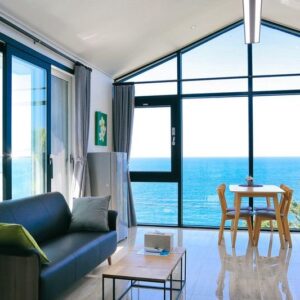Vacation with 제주독채민박 or friends and romantic sojourns has been a human need for decades. The only difference between a vacation trips in say, early 1900 and today is that these needs have become more focused and defined. A vacation traveller used to accept an “as available” product in the past, but today, he knows what he wants. He has multiple choices of products and destinations to choose from, and that too in different vacation packages.
Resort development demands a thorough knowledge of users vacation habits, his wants and needs on one hand, and, the ability of the location to match them. There has to be a total synergy of needs and profile of the resort. The task presents further challenges as there are various types of resorts depending upon the location and nature of development.
There are resorts that are a destination by themselves; they offer a composite and comprehensive product and vacation deals to the holiday seeker. Hotels, serviced apartments, self contained luxury villas for the families or group of friends, restaurants, bars, night clubs, discotheques, wellness centres, entertainment, sports, shopping and the works. Once you enter the resort, you need not look outside the resort for any thing during your stay.
On the other hand, one could develop a resort hotel in a popular holiday destination. The hotel could be in any category depending upon the profile of the destination and developers target clientele. The resort hotel provides rooms or apartments with a restaurant, bar, swimming pool, wellness centre, business centre and other basic services. The guests can visit other service providers in the location like pool bars, billiards, sports, nightclubs that compliment the hotel. In either case, the destination as a whole ensures that there is enough activity in the location to keep the guest busy, entertained and happy, while developers investment remains to resort hotel only.
Resort development strategy will largely depend on what type of resort one wants to develop. Different types of resorts are classified based on location and core activity possible in the location. The most popular type of resorts are beach resorts, hill resorts, ski resorts, golf resorts, lake resorts, luxury resorts, spa resorts, tropical resorts, to name a few. Each type will require different and specific planning and development considerations and inputs for its success.
Resorts are generally located in far-off and remote locations, as they can be where nature provides the activity and atmosphere. Connectivity and availability of good infrastructure therefore becomes a major issue for the planner. Presence of an airport or rail connection in the near vicinity, say around 90 minutes drive, or connectivity by a good road is essential for the success of the resort. Similarly, availability of water, sewerage and electricity is crucial. Resorts in popular destinations in most countries are therefore developed with the active support and involvement of the local or national governments, as the amount of investment required for infrastructure development could be sizable.
Resorts are largely seasonal in nature. Therefore, the planners have to give serious thought on creating a product, which will reduce the seasonality threat to the bottom line. One of the ways is to provide good conference and meeting facility to market the resort as a corporate conference destination in lean period.



